
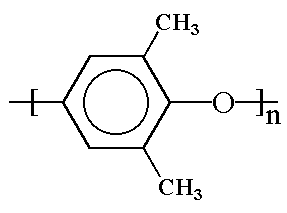
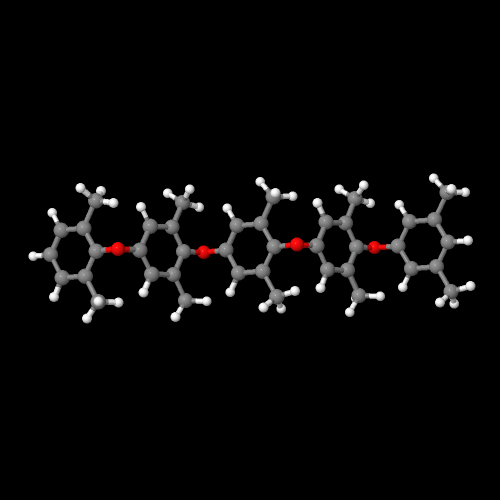
You can view the 3D image of PPO by clicking here or just click on the image itself.
Be sure to close the new window that opens up when you are ready to come back here.
For poly(phenylene oxide) at a glance, click here!
Poly(phenylene oxide), or PPO, is one of those high-performance polymers
we like to call engineering thermoplastics. Its biggest strength
is its resistance to high temperatures. It has a very high glass transition temperature, 210 oC. But
there's a price for being heat-resistant. Most polymers are processed at high temperature in a liquid-like state. But if your polymer won't become liquid-like at reasonable temperatures, you can't process it! For this reason, PPO is often made into blends with high-impact polystyrene (HIPS for short). Blending PPO with HIPS makes the PPO easier to process, plus it gives PPO some resilience. PPO needs this toughening because by itself PPO can be brittle in some situations. General Electric makes PPO/HIPS blends and sells them under the name NorylTM.
Structurally, PPO is made of phenylene rings linked together by ether linkages in the 1,4 or para- positions, with a methyl group attached to carbon atoms in the 2 and 6 positions.
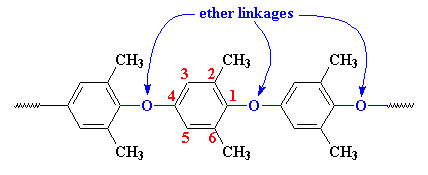 This polymer should really be called poly(2,6-dimethylphenylene oxide), but we call it poly(phenylene oxide) because we're lazy.
This polymer should really be called poly(2,6-dimethylphenylene oxide), but we call it poly(phenylene oxide) because we're lazy.
PPO is made by what we call oxidative coupling polymerization of the monomer 2,6-dimethylphenol. Water is a by-product, and so this is a condensation polymerization.
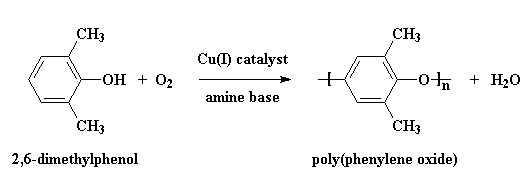
This is what our monomer 2,6-dimethylphenol looks like in 3-D:
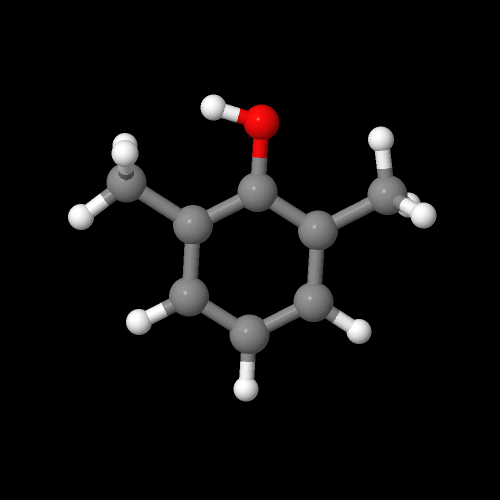
You can view the 3D image of DMP by clicking here or just click on the image itself.
Be sure to close the new window that opens up when you are ready to come back here.
Some other engineering thermoplastics include:








